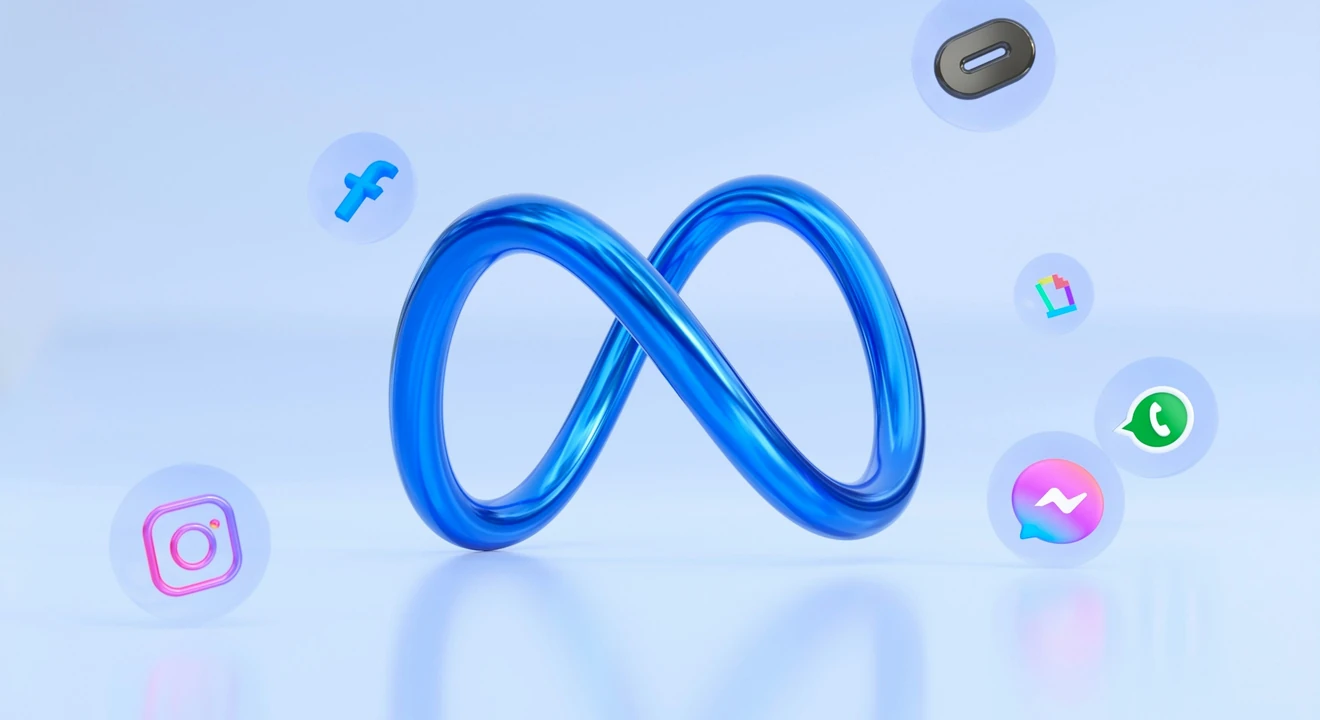If you’ve applied for a software engineer, technical program manager, or engineering manager role at Meta, you may have encountered the product architecture interview round. It’s one of two options, the other one being system design that engineering candidates are given during the design round for their full interview loop.
You may have also found that there’s very little information about it online.
But not to worry–in this article, we’ll be going over everything you need to know to prepare for the product architecture round at Meta. Here’s what we’ll cover:
Let’s get started!
Click here to practice 1-on-1 with an ex-Meta interviewer
1. What is the product architecture interview round at Meta?↑
In your final interview loop for the software engineer (SWE) role at Meta, you’ll encounter three interview topics: coding, design, and behavioral. Product architecture is one of the two options for the design portion, the other being system design. You’ll either be asked to choose between the two or get an assignment, depending on the specific position you’ve applied for.
The focus of the product architecture interview is how you build a software solution with a good application programming interface (API). Where system design is all about designing back-end components for scalability, product architecture or product design is more concerned with the overall user experience of your product.
Here’s how two of our Meta coaches differentiate system design interviews from product architecture interviews:
“The purpose of the traditional system design interview is to assess the candidate's ability to build software systems or end-to-end systems that solve some problem or support some end-user product. The focus of a product design interview is typically on the more holistic parts of building a software solution and less focus on the back end components required.” Ex-Meta senior software engineer & tech lead Sidhanshu
“You can think of product architecture interviews as offering a broader look at a product as a whole, while system design interviews tend to dig deep into the more technical design aspects of building a (usually smaller) system as part of a product.” Ex-Meta senior software engineer and coach Sahand
Compared to the system design interview, product architecture interviews are more open-ended. “A product design question typically has a lot more product-oriented questions to be considered and more leeway in terms of the direction that the interview question can go in.” Ex-Meta senior software engineer & tech lead Sidhanshu
There is no right or wrong answer in a product architecture interview. Your interviewer won’t be evaluating the correctness of your answer, but rather how you approach a problem and design a solution for it.
For more information, we recommend you watch this video from Meta explaining the difference between system design and product architecture questions.
1.1 How does the product architecture interview work at Meta? ↑
You’ll have the product architecture interview round as part of your full interview loop at Meta. So if you manage to clear your initial screens, you can expect your recruiter to ask you if you want to go for the product architecture or system design as your 45-minute design interview round.
In some cases, candidates won’t be asked to choose. You’ll be assigned the product architecture interview if you specifically apply for a software engineer-product role and the system design interview if you apply for a software engineer-infrastructure role.
If you're interviewing for a senior or staff engineer role, as an Meta E6 level candidate, for example - you might face two product architecture interviews.
Overall, the product architecture interview is pretty similar to the system design interview. The actual question you get could even be the same - e.g “Design YouTube”. It’s the focus of the interview and the way you approach the problem that will be different.
If you’re onsite, you may be asked to draw your design diagrams on a whiteboard. If you’re having a virtual interview, you should familiarize yourself with Excalidraw, the online whiteboard tool Meta uses in such interviews.
1.2 What skills are interviewers assessing during the product architecture interview? ↑
Based on the official SWE interview guide by Meta, here are the skills your interviewers will be on the lookout for during your product architecture interview.
1.3.1 Problem navigation
Interviewers want to see how you approach an ambiguous real-world problem in a systematic and organized manner, and how you prioritize and define the most important problems to design a solution for based on both user needs and business goals.
1.3.2 Solution design
For this skill, interviewers want to see how you design a solution while taking into consideration different user needs and scenarios.
1.3.3 Technical excellence
What interviewers want to evaluate in terms of your technical excellence is your ability to dive deep into technical details, identify multiple options, assess trade-offs, explain your choices given the requirements, and also point out possible points of failure. These will require you to demonstrate your technical knowledge.
1.3.4 Technical communication
Lastly, interviewers want to see how clearly you communicate not just your technical knowledge but your reasoning for your choices and your vision.
1.3 System design vs. product architecture interview ↑
If you’ve been given the option to choose between system design and product architecture for your design interview round, how do you know which one to choose?
To help you decide and assess where you might do better, take a look at the areas you might be expected to discuss for each based on Meta’s official SWE interview guide.
System Design vs. Product Architecture: Areas for Discussion
System design
- Testability
- Usability
- Extensibility
- Security
- Portability
- Availability
- Scalability
- Operational characteristics
Product architecture
- Storage data models
- Scalability
- Design patterns
- Data ownership
- Protocols
- Data formats
- Client-server design
- Designing for long-term vs. complexity
- Accommodating possible product changes
Additionally, if you have experience building user-facing products before with usability, accessibility, product visibility, and real-world impact in mind, and you’re confident that you can design any real product you use, product architecture may be a great fit for you.
Are Meta product architecture interviews hard?
You can expect the product architecture interview to be challenging, just as with any Meta interview. Especially since you’re interviewing for one of the most sought-after positions in one of the biggest tech companies worldwide. It can be hard if you come in unprepared.
If you’re still unsure which of the two design interviews is the best fit for your skills, you can consult your recruiter. If you know an engineer who works at Meta, ask them to take a look at your resume and help you assess. You can also book a session with one of our Meta coaches to get their insight.
2. How to answer a product architecture question↑
Now that you know all about how a product architecture interview Meta works, let’s take a look at the topics you might be expected to cover in your answer, a framework you can use for answering, plus example questions you can use for practicing.
2.1 Potential topics to be covered
Below, our coaches expand on the potential topics you can cover during your product architecture interview. The areas and domains vary, depending on the product you’ll be asked to design.
Ex-Meta senior software engineer and coach Sahand: “Cross-domain questions and discussions often arise, which can include topics such as security, privacy, experimentation, data collection and analysis, logging, and more, depending on the specific product.”
Ex-Meta senior software engineer & tech lead Sidhanshu: “In discussing a product architecture question, we expect our candidates to explore the problem domain more fully, to think about the entities in the system, a logical data model, potentially the physical data model (how the data is stored within the client and the server), the APIs and the interactions between the servers and clients.”
Here’s a more comprehensive list of areas you could cover in your product architecture interview, based on Meta’s interview guide:
- Storage data models
- Scalability
- Design patterns
- Data ownership
- Protocols
- Data formats
- Client-server design
- Designing for long-term vs. complexity
- Accommodating possible product changes
2.2 Product architecture answer framework
We recommend using a repeatable answer framework when answering Meta product architecture interview questions. This is the same framework we recommend for the Meta system design interview. Here is a summary:
Step 1: Ask clarifying questions
First, spend about five minutes checking in with your interviewer about the functional and non-functional requirements of what you’re going to design. Ask about the product design’s goals and how they will be measured. Be sure that you fully understand the question before moving forward.
State any assumptions you’re making that will influence your design approach.
Step 2: Design high-level
Decide on a high-level architecture based on the requirements above. Think about the key entities in the system and choose the logical and appropriate data storage solutions. At this point, you’ll also want to consider selecting the best formats and protocols for communication between clients and servers.
Step 3: Drill down on your design
If you haven’t done so already, start mapping out your diagram on the whiteboard or Excalidraw. Talk the interviewer through your diagram so that they can follow along and ask questions when necessary.
Consider certain real-world use cases that might break the system and suggest strategies to handle them.
To finalize your design, play to your strengths by choosing a component you’re most familiar with and drilling down on it. If you’re not sure which component would be best to explore, ask your interviewer.
Step 4: Bring it all together
Before wrapping up the round, take about five minutes to re-examine what you’ve designed. Does it meet the objectives you laid out with the interviewer at the beginning of the session? It is okay to change some components at this stage if you think it will improve the product design, but you must explain to the interviewer what you are doing and why.
Apply this framework to practice questions like those we’ve provided above. Use it on different types of questions in a variety of subjects, so that you learn how to adapt it to different situations and respond to unpredictable questions on the fly.
2.3 Example question and answer framework
Using the framework above, let’s take a look at how you can approach a common product architecture question at Meta.
Design a newsfeed API
Step 1: Ask clarifying questions
- Scope: What are the core requirements of the product? How many users are expected to use it/how many posts? What are their metrics in terms of performance and scalability?
- Features: Ask about the specific features that the newsfeed should support (e.g., real-time updates, personalization).
- Constraints: Talk about the limitations or constraints, such as data privacy requirements or regulatory considerations.
Step 2: Design high-level
- Architecture: Decide on a high-level architecture, such as a microservices approach or a monolithic design, based on the core requirements.
- Data models: List down the key data entities such as users, posts, and newsfeeds. Choose the best storage solutions appropriate to the requirements (e.g., relational or NoSQL databases).
- Protocols and data formats: Choose protocols (REST, GraphQL) and data formats (JSON, Protocol Buffers) for communication between clients and servers.
Step 3: Drill down on your design
- Scalability: Plan strategies for handling large volumes of data and user traffic, repeated requests, etc.
- Real-time updates: Select protocols and design patterns best suited for your product.
- Client-server interaction: Identify and define API endpoints, pagination strategies, and rate limiting for efficient and secure data transfer.
Step 4: Bring it all together
- Integration: Suggest ways to ensure modularity that aligns with scalability goals.
- Future-proofing: Manage future changes and updates by incorporating versioning, extensibility, and comprehensive documentation into your proposed design.
- Testing and feedback: Add how you plan to implement thorough testing strategies (unit, integration, load testing) and set up user feedback mechanisms to refine and enhance the system over time.
This official video by Meta differentiating system design and product architecture shows how you can answer “Design a system to power typeahead suggestions” for both interviews.
2.4 Product architecture example questions
Using the answer framework above, here are a few more product architecture example questions that you can practice with, collected from Meta’s official SWE interview loop guide and Hello Interview's guide on product architecture interviews.
- Design a service or product API
- Design a chat service or a feed API
- Design an email server
- Design Ticketmaster
- Design Uber
- Design Dropbox
- Design the UX and APIs for Newsfeed
- Design Leetcode
3. How to prepare for a product architecture interview↑
Now that you know what to expect in a Meta product architecture interview, here’s a 3-step plan you can follow to prepare for this particular interview round.
Click here to read our comprehensive guide to the Meta software engineer interview process.
3.1 Brush up on your engineering design knowledge
Before your interview loop, be sure to review engineering design basics. Read engineering blogs and look for approaches that have led to success, but also try to learn from other’s failures or false starts.
It would also be helpful to take a look at Meta engineering resources to get an idea about how they approach product architecture. Here are a few resources to get you started:
If you have any domain expertise in product design, brush up on that as well. Be prepared to demonstrate knowledge in the skills and expertise you’ve already declared in your resume. You don’t need to do a deep dive into a whole new domain just for the interview.
Meta also doesn’t expect you to be an expert in all the concepts and areas of product architecture--demonstrating basic understanding is enough.
3.2 Practice answering product architecture questions
Practice organizing your answer using the framework we’ve introduced in section 2.2. Another useful exercise would be to reverse-engineer apps you regularly use.
Familiarize yourself with drawing your system diagrams on a whiteboard or Excalidraw, depending on where your interview loops will be held. Time your answers, and try to keep it within 30 minutes.
Lastly, practice talking about trade-offs. As per Meta’s interview guide, apart from suggesting optimal solutions, they want to see how you think through basic trade-offs, so don’t neglect this part when you practice answering. In fact, make it a priority.
Once you’re in command of the subject matter, you’ll want to practice answering questions. But by yourself, you can’t simulate thinking on your feet or the pressure of performing in front of a stranger. Plus, there are no unexpected follow-up questions and no feedback.
That’s why many candidates try to practice with friends or peers.
3.3 Practice with peers
If you have friends or peers who can do mock interviews with you, that's an option worth trying. It’s free, but be warned, you may come up against the following problems:
- It’s hard to know if the feedback you get is accurate
- They’re unlikely to have insider knowledge of interviews at your target company
- On peer platforms, people often waste your time by not showing up
For those reasons, many candidates skip peer mock interviews and go straight to mock interviews with an expert.
3.4 Practice with experienced Meta interviewers
In our experience, practicing real interviews with experts who can give you company-specific feedback makes a huge difference.
Find a Meta interview coach so you can:
- Test yourself under real interview conditions
- Get accurate feedback from a real expert
- Build your confidence
- Get company-specific insights
- Learn how to tell the right stories, better.
- Save time by focusing your preparation
Landing a job at a big tech company often results in a $50,000 per year or more increase in total compensation. In our experience, three or four coaching sessions worth ~$500 make a significant difference in your ability to land the job. That’s an ROI of 100x!
Click here to book Meta mock interviews with experienced Meta interviewers.















